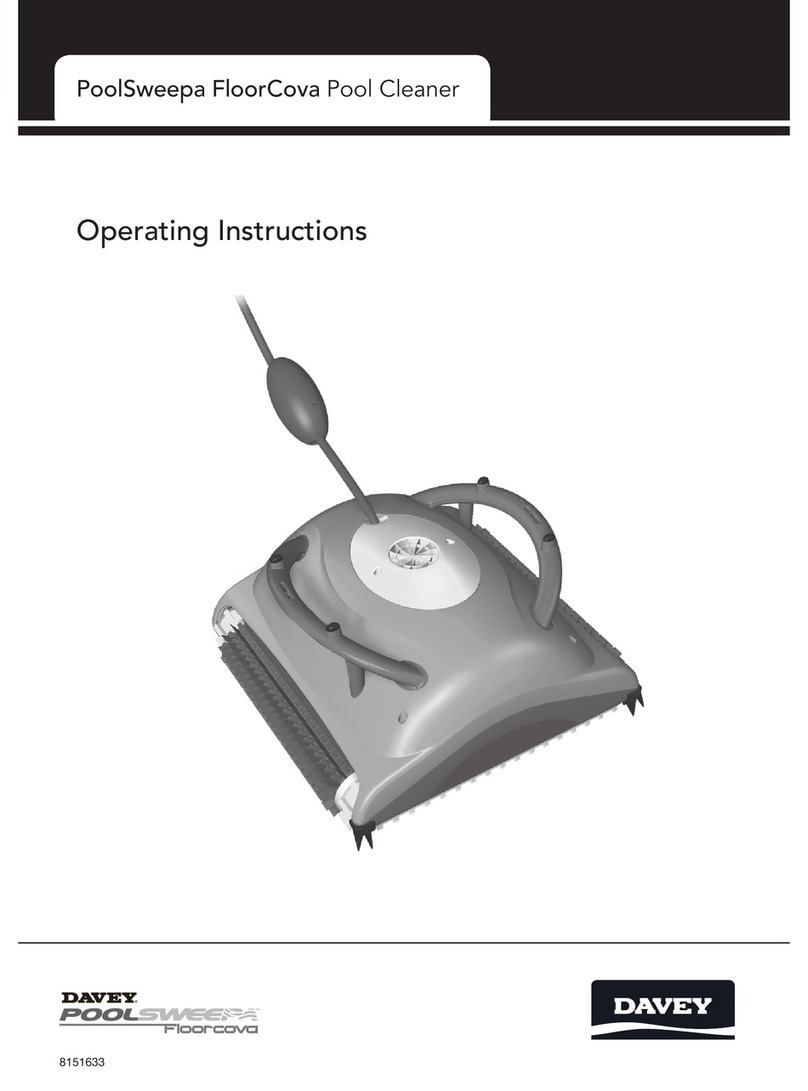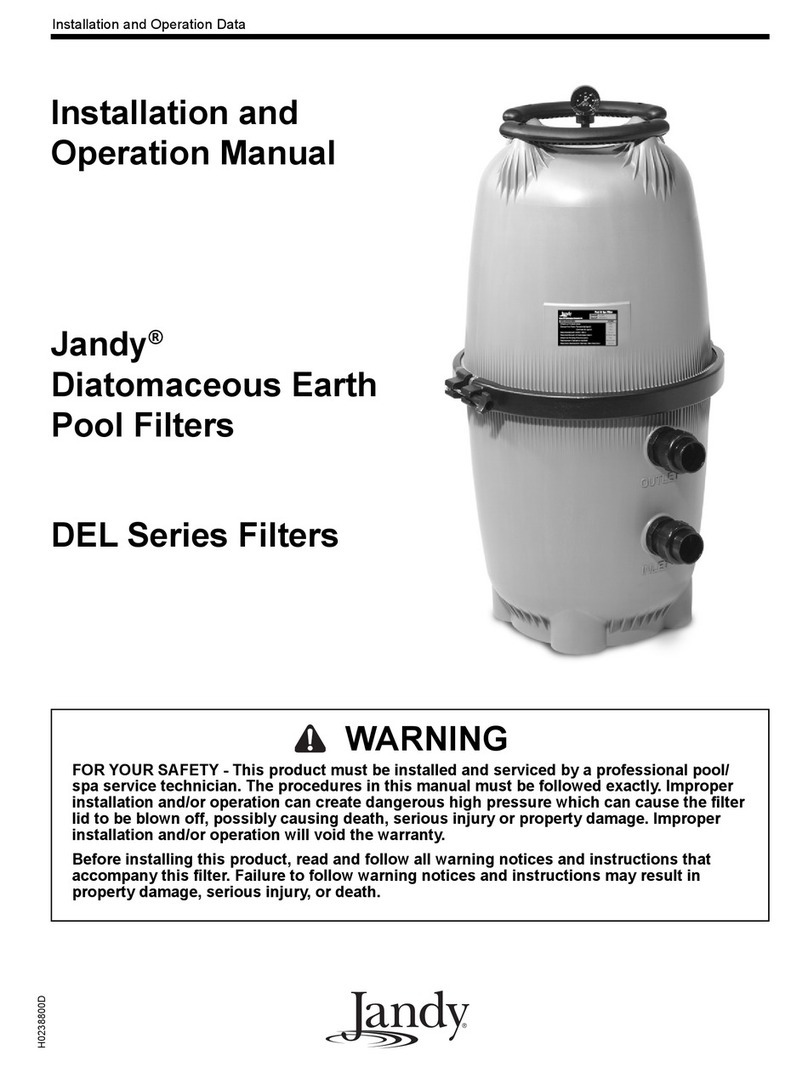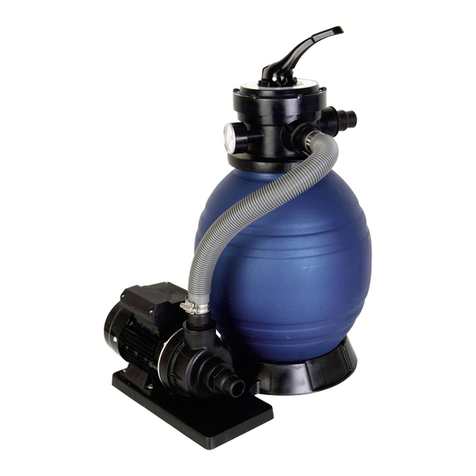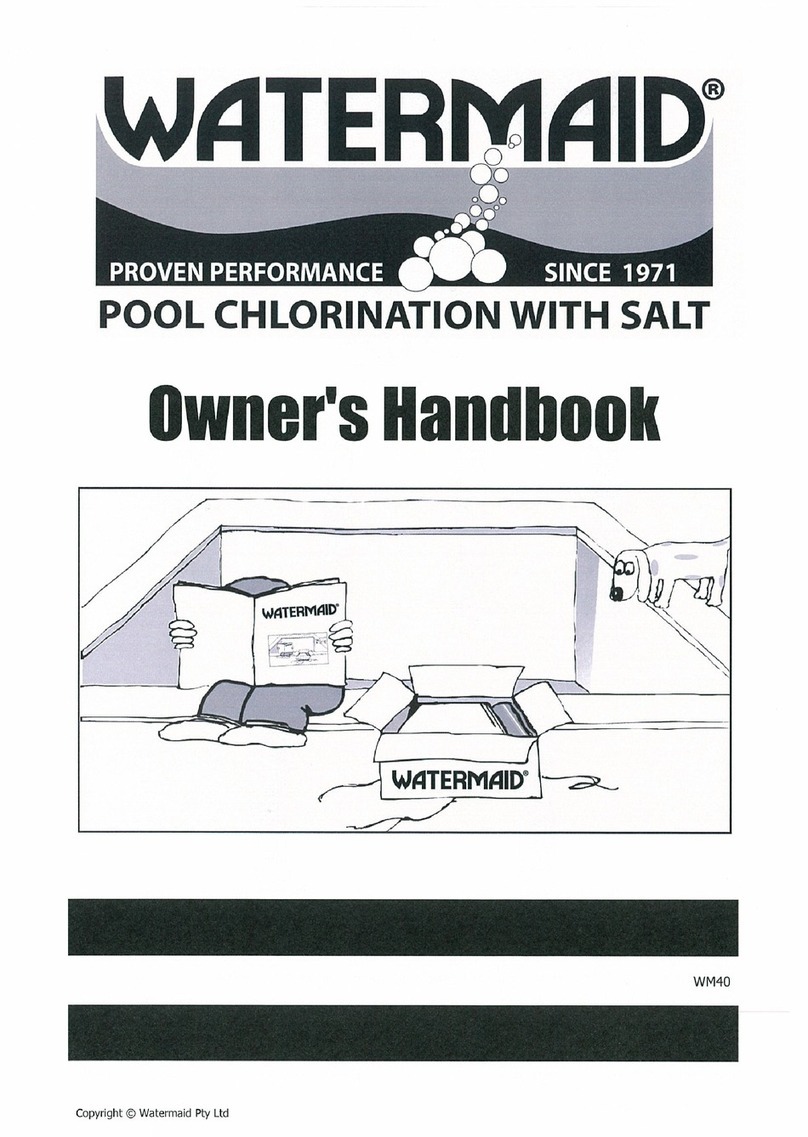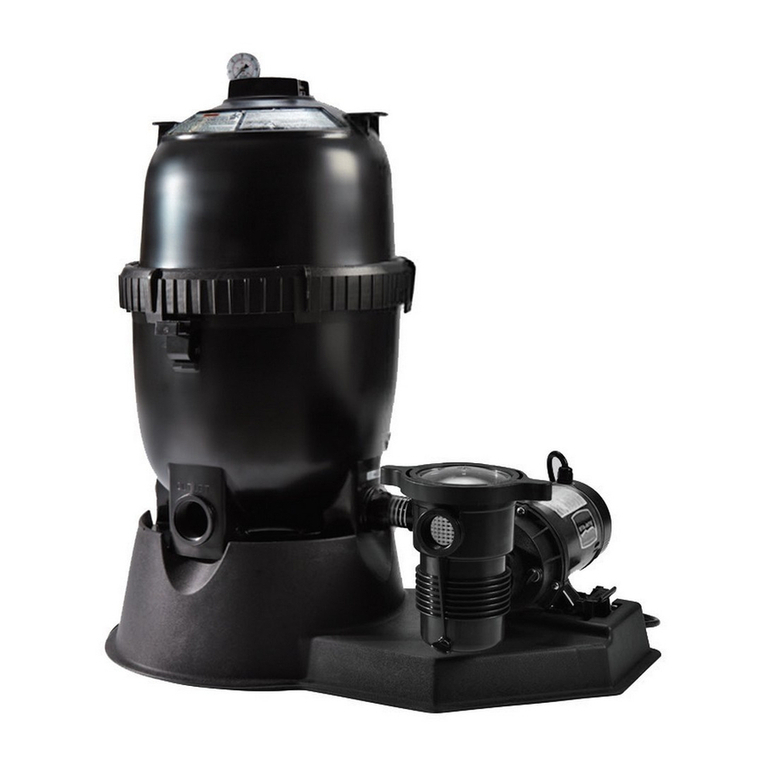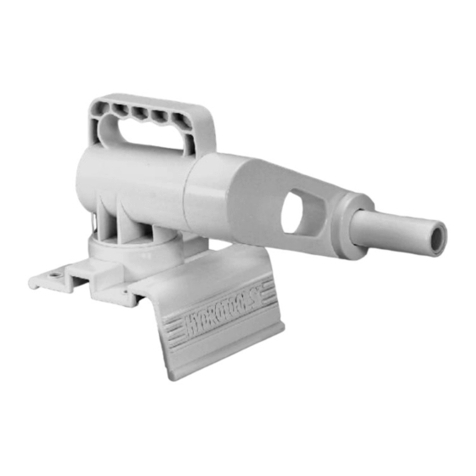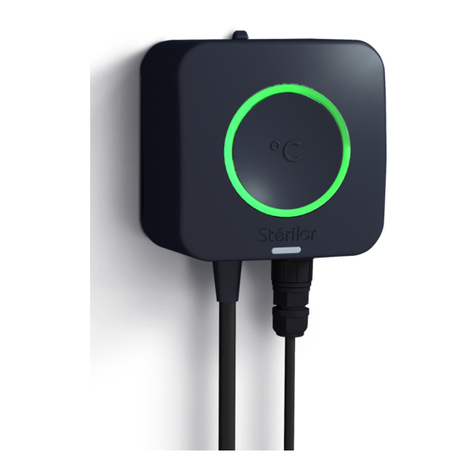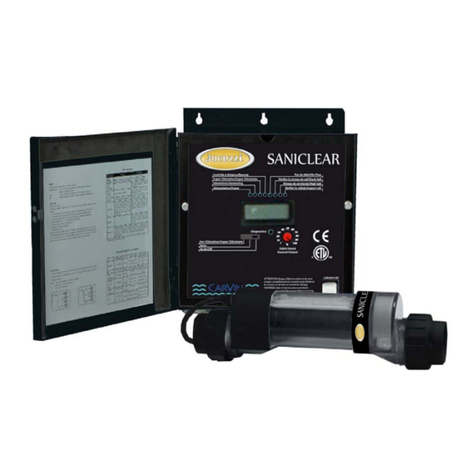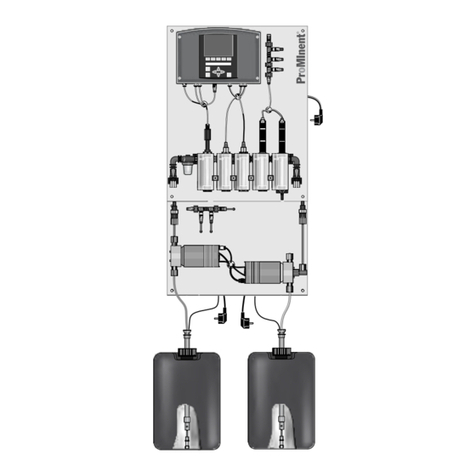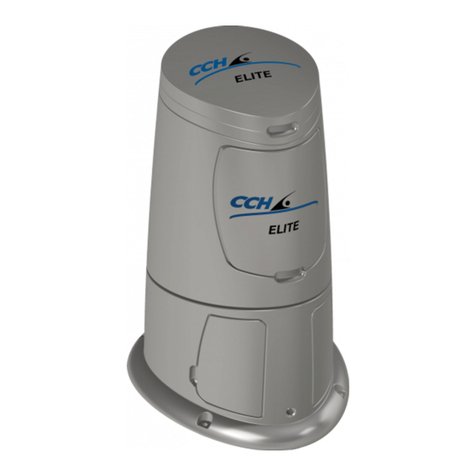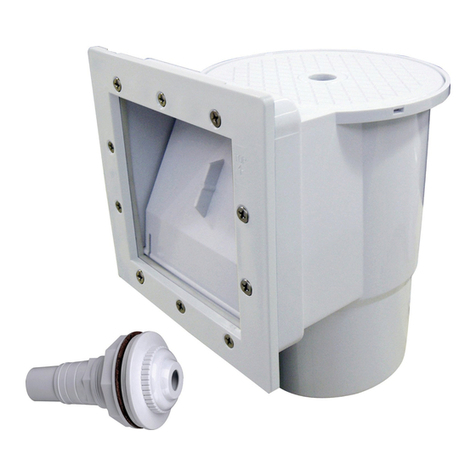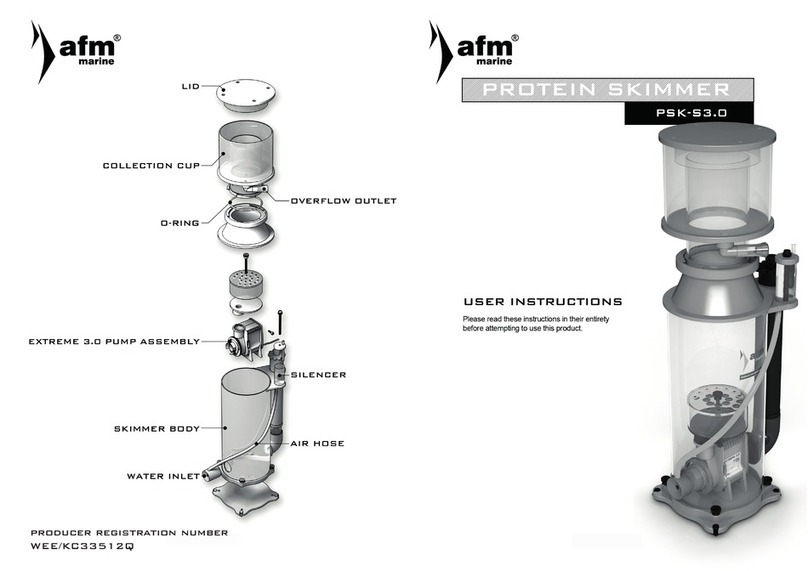-
66
-
5.3
REINIGUNG
DES
SILIKAGELS
Bei der Reinigung des Filters muss das Silikagel im Inneren des Filters gereinigt werden. Hierfür wird mit dem
oberen Wechselventil die Laufrichtung des Wassers umgedreht. Diese Reinigung sollte regelmässig durchge-
führt werden. Dabei ist auf einige Faktoren zu achten, die anzeigen, wenn das Silikagel verschmutzt ist:
Der Rückfluss ist vermindert, obwohl überprüft wurde, dass die Pumpe gefüllt ist.
Das Manometer zeigt einen zu hohen Druck an (die Nadel steht zwischen Gelb und Rot oder auf Rot)).
5.4
ENTLEEREN
DES
SWIMMINGPOOLS
Der Filter ermöglicht es, den Swimmingpool nach Beendigung der Badesaison fast vollständig zu entleeren.
Hierfür muss das obere Wahlventil auf Position Entleeren (waste) (Abb. 5) gestellt werden. Bei noch nicht
angestelltem Filter wird der Schlauch ø 38 mm x 1,5 m an die Wasserentleerung (waste) des Ventils anges-
chlossen und sein anderes Ende zu einem Wasserabfluss oder zur Kanalisation geführt.
5.5
REINIGUNG
DES
SWIMMINGPOOLBODENS
Zur Reinigung des Schwimmbeckenbodens kann die Filterpumpe mit einem Bodenreiniger verwendet werden:
Man benötigt außerdem einen Schlauch ø38 mm und einen Teleskopstange. Fragen Sie in Ihrem Geschäft
nach, oder beim Kundendienst des Schwimmbeckenherstellers. Verwenden Sie immer Originalersatzteile.
Wenn der Schlauch länger als erforderlich zum Erreichen sämtlicher Stellen im Schwimmbecken ist, wird
seine Handhabung schwierig. Schneiden Sie das überflüssiger Schlauchende ab. Achten Sie darauf, daß
die Gummienden nicht undicht werden.
5.6
SPÜLEN
SF130,
SF135,
SF140,
SF150
Nach dem "REINIGEN" des Filters und nachdem die Anlage auf Position "FILTERN" gestellt wurde, läuft das
Wasser einige Sekunden lang trüb zum Schwimmbad. Um zu vermeiden, dass dieses trübe Wasser in das
Schwimmbad gelangt, gibt es diese Position "SPÜLEN" am Mehrwegventil. Wie folgt vorgehen: Sofort nach
dem "REINIGEN" das Mehrwegventil auf Position "SPÜLEN" (Abb.5) stellen und die Pumpe 1 Minute lang
einschalten. Dann die Pumpe abschalten und das Ventil auf "FILTERN" stellen.
5.7
ZIRKULIEREN
SF135,
SF140,
SF150
In dieser Position des Wahlventils wird das Wasser von der Pumpe direkt ins Schwimmbad geleitet, ohne
durch das Innere des Filters geleitet zu werden (Abb.5).
5.8
GESCHLOSSEN
Das Wechselventil steht auf der Stellung Verschluß (CLOSED). Diese wird verwendet, um zu vermeiden, daß
das Wasser durch die Schläuche und den Filter zirkuliert (Abb.5).
6 WARTUNG
Nach Beendigung der Badesaison muß der Filter an einem trockenen, wettergeschützten Platz aufbewahrt werden.
Aus diesem Grund werden nach Durchführung eines automatischen Reinigungsvorganges des Silikagels
die Schläuche abmontiert und das gesamte Wasser über den Entleerungsdeckel des Depots aus dem Filter
ausgelassen.
Nachdem das gesamte Wasser aus dem Filter entfernt worden ist, wird sorgfältig die Filteröffnungsgewinde
von Silikagelresten gesäubert, bevor der Deckel erneut aufgesetzt wird, denn das Siikagel könnte die
Filteröffnungsgewinde beschädigen.
Der Entleerungsstopfen des Filterkessels darf nur für diesen Vorgang verwendet werden.
SEHR
WICHTIG: Bevor der Filter nach einer längeren Ruhepause wieder in Betrieb genommen wird, ist zu über-
prüfen, ob sich die Achse des Motors nicht festgeklemmt hat. Entfernen Sie das Schutzgehäuse wie im beschrie-
ben, indem sie es mit einem flachen Schraubenzieher von dem Ende her bewegen, das über dem Metalldeckel
der Lüftung hinter der Motorwicklung erscheint, bis es frei ist. Bewegen Sie danach die Achse nach rechts und
links. Sollte sie sich nicht drehen lassen, müssen Sie das Laufrad der Turbine reinigen.
Nach einem längeren Stillstand empfiehlt es sich ebenfalls, zu überprüfen, ob die Pumpe gefüllt ist, bevor
er angestellt wird.

